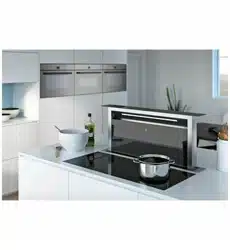Loading ...
Loading ...
Loading ...

3 Your appliance
General notes on cookware
▸ As far as possible ensure that the dia-
meter of the base of the cookware is
the same size as the upper diameter
of the cookware.
▸ We advise against the use of cook-
ware with a pressed base as this type
of cookware does not work with all in-
duction hobs.
▸ Some induction hobs have the melt,
keep warm and simmer functions. We
recommend using cookware without a
concave base for these functions.
▸ Handles that are loose or hollow can produce a loud whistling noise.
▸ The adherence of the cookware to the hob surface is reduced during operation, and
the cookware can therefore be moved more easily.
▸ Thick pan walls absorb the vibrations and reduce the noise level.
Energy-efficient cooking
For maximum energy efficiency and even heat distribution note the following:
▪ The base of the cookware must be clean, dry and smooth.
▪ Centre the cookware in the middle of the cooking zone.
▪ Use a well-fitting lid.
▪ Match the diameter of the cookware to the quantity of food to be cooked.
Coated cookware
▪ Coated cookware may be operated above power level provided that the bottom of
the pan is completely covered with liquid.
– The coating may otherwise become overheated and damaged.
▪ For frying, do not use a higher power level than .
Never use PowerPlus with coated frying pans.
Noise during cooking
Cookware can make noise during cooking. This does not indicate any malfunction, nor
does it affect the functioning of the appliance in any way.
Noise depends on the cookware used. If the noise causes considerable disturb-
ance, it can help to change the cookware.
3.7 OptiGlass
Hobs with OptiGlass have an additional coating on the glass surface.
This coating makes the surface harder, tougher and more scratch resistant than non-
coated glass surfaces. Follow care and maintenance instructions.
Under normal circumstances, significantly fewer scratches should occur on the
glass surface during cooking. However, even a sharp grain of sand or particle of
grit, for example, under a pan can cause scratches.
10
Loading ...
Loading ...
Loading ...
